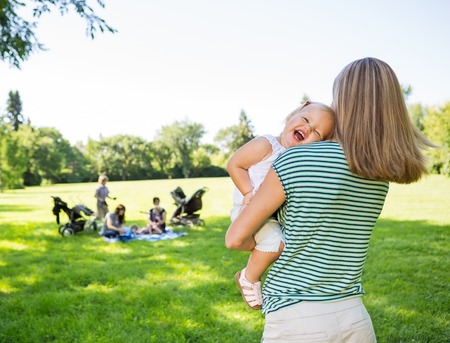1. Introduction: The Power of Music and Dance in Family Life
Music and dance have always been a vital part of human culture, bringing people together and creating shared experiences. Within families, these activities play an essential role in strengthening relationships, fostering emotional connections, and making lasting memories.
How Music and Dance Bring Families Closer
When families engage in music and dance together, they create a special bond that goes beyond words. Whether its singing along to a favorite song in the car, having a spontaneous dance party in the living room, or attending a concert together, these moments help build stronger relationships.
Benefits of Music and Dance for Family Bonding
| Benefit | Description |
|---|---|
| Encourages Communication | Singing or dancing together helps family members express themselves and connect on an emotional level. |
| Creates Lasting Memories | The joy of shared musical and dance experiences becomes cherished family moments. |
| Promotes Teamwork | Dancing in sync or playing instruments together teaches coordination and cooperation. |
| Reduces Stress | Music and movement provide relaxation and help relieve everyday stress for both kids and adults. |
| Cultivates Traditions | Singing holiday songs or performing cultural dances strengthens family traditions across generations. |
The Universality of Music and Dance
No matter the culture or background, music and dance are universal ways to bring families closer. From lullabies sung to babies to grandparents sharing their favorite songs with younger generations, these activities create meaningful connections across ages.
A Simple Way to Strengthen Family Bonds
You don’t need to be a professional musician or dancer to enjoy these benefits. Simply playing a song during dinner, having a small dance-off at home, or learning a new dance move together can make a significant difference in family relationships.
2. Creating Shared Memories Through Music and Dance
Music and dance have a unique way of bringing families together, creating shared experiences that last a lifetime. Whether its singing along to favorite songs during a road trip, dancing in the living room on a Friday night, or celebrating special occasions with cultural traditions, these moments strengthen family bonds.
Building Traditions That Last
Many families incorporate music and dance into their daily routines and special celebrations. These traditions create a sense of belonging and continuity across generations. Here are some common ways families use music and dance to connect:
| Family Tradition | Description |
|---|---|
| Holiday Sing-Alongs | Singing traditional songs together during holidays like Christmas or Thanksgiving. |
| Weekly Dance Nights | A designated evening where the family plays music and dances together for fun. |
| Cultural Celebrations | Dancing and singing as part of heritage-based festivals or family reunions. |
| Lullabies at Bedtime | Singing calming songs to children before they sleep, creating comfort and security. |
| Karaoke Nights | A fun activity where family members take turns singing their favorite songs. |
The Emotional Connection of Music and Dance
Songs and dances often become tied to emotions and memories. A song played at a wedding might bring back joyful memories years later, while a childhood lullaby can evoke feelings of warmth and safety. When families engage in musical traditions together, they create emotional connections that deepen their relationships.
The Power of Nostalgia
Nostalgic music has a powerful effect on emotions. When parents introduce their children to songs from their own childhood, it creates a bridge between generations. Likewise, when children grow up with certain songs or dances, they may carry those traditions into their own families in the future.
A Simple Way to Start Family Traditions
If your family doesn’t already have musical traditions, it’s never too late to start! Choose a song for special occasions, create a playlist for family road trips, or set aside time each week for dancing together. The key is consistency—over time, these small moments will turn into cherished memories.

3. Emotional Expression and Communication
Music and dance provide a unique way for family members to express emotions and communicate without words. Whether it’s a child dancing joyfully to their favorite song or parents swaying together to a nostalgic tune, these moments create a shared emotional experience that strengthens family bonds.
How Music Helps Express Emotions
Music has the power to evoke deep feelings and memories. Families can use songs to express love, happiness, excitement, or even sadness in a healthy way. Singing along to a familiar melody or playing an instrument together can serve as an emotional outlet that helps family members connect on a deeper level.
The Role of Dance in Nonverbal Communication
Dance is another powerful form of expression that allows families to communicate feelings without speaking. Through movement, body language, and rhythm, family members can share emotions like joy, comfort, or support. This is especially beneficial for young children who may not yet have the words to express how they feel.
Examples of Emotional Expression Through Music and Dance
| Activity | Emotional Benefit |
|---|---|
| Singing lullabies to children | Creates a sense of security and comfort |
| Dancing together during celebrations | Encourages joy and bonding |
| Listening to nostalgic music | Sparks meaningful conversations about memories |
| Playing instruments as a family | Encourages teamwork and self-expression |
Creating an Emotionally Supportive Environment
By incorporating music and dance into daily life, families can foster an environment where emotions are openly shared and understood. Whether it’s turning on uplifting music during breakfast or having an impromptu dance party after dinner, these simple activities encourage emotional connection in a fun and natural way.
4. Encouraging Togetherness and Fun
Music and dance have a magical way of bringing families closer together. Whether its through a planned family dance night, a spontaneous sing-along in the car, or making up silly songs in the kitchen, these moments create joy and laughter that strengthen relationships. Engaging in music and dance as a family helps build connections, encourages communication, and fosters a sense of belonging.
Family Dance Nights
Hosting a family dance night is a fun and easy way to encourage bonding. Simply put on a favorite playlist, clear some space in the living room, and let loose! Dancing together allows family members to express themselves freely, share laughs, and release stress. It’s also a great way to stay active while creating positive memories.
Sing-Alongs for Connection
Singing together can be both entertaining and meaningful. Whether it’s belting out classic hits during a road trip or singing bedtime lullabies, music connects generations and creates shared experiences. Family sing-alongs help improve mood, reduce stress, and bring people closer through the power of melody.
Spontaneous Music-Making
Not all musical moments need to be planned! Spontaneous music-making—like tapping on pots and pans, clapping along to a beat, or making up silly rhymes—adds an element of surprise and creativity to daily life. These small but joyful interactions help build strong emotional connections between family members.
Ways to Incorporate Music and Dance into Family Life
| Activity | Description |
|---|---|
| Family Dance Night | Create a playlist of favorite songs and have a dance party at home. |
| Singing in the Car | Turn road trips into fun sing-along sessions with favorite tunes. |
| Kitchen Jam Session | Use utensils as instruments and make up songs while cooking. |
| Lullaby Time | Singing calming songs before bed strengthens emotional bonds. |
| Music-Themed Game Night | Play games like karaoke challenges or name-that-tune competitions. |
The Power of Joyful Moments
The beauty of music and dance lies in their ability to turn ordinary moments into unforgettable memories. Whether structured or spontaneous, these activities encourage playfulness, laughter, and deep emotional connections within families. By making music and dance a regular part of family life, you create a loving environment where everyone feels valued and connected.
5. Music and Dance as a Tool for Teaching and Growth
Music and dance are not only fun activities but also powerful tools that help children grow in confidence, develop social skills, and appreciate different cultures. These creative expressions provide an engaging way for families to bond while also fostering essential life skills in children.
Building Confidence Through Music and Dance
When children sing, play instruments, or dance, they learn to express themselves without fear. Performing in front of family members or participating in group activities builds their self-esteem over time. Encouraging kids to take small steps, such as dancing at home or singing along to songs, helps them feel more comfortable with self-expression.
Enhancing Social Skills
Music and dance naturally involve interaction, making them great tools for improving a childs social abilities. Whether they are learning to keep rhythm in a group song or coordinating movements with others in a dance routine, these activities teach teamwork, patience, and communication.
Ways Music and Dance Improve Social Skills
| Activity | Social Skill Developed |
|---|---|
| Singing together | Teamwork and listening skills |
| Dancing with family | Cooperation and coordination |
| Playing instruments in a group | Turn-taking and patience |
| Learning cultural dances | Cultural appreciation and empathy |
Cultural Appreciation Through Music and Dance
Exposing children to different musical styles and dances from around the world helps them appreciate diversity. Learning about various traditions through music can spark curiosity and respect for other cultures. Parents can introduce international songs or traditional dances during family time to make learning about different cultures fun and engaging.
Strengthening Family Bonds
The shared experience of music and dance brings families closer together. Whether its having a dance party in the living room or singing bedtime songs, these moments create lasting memories. Making music and dance a regular part of family routines fosters stronger emotional connections between parents and children.
6. Conclusion: Strengthening Family Connections Through Rhythms and Movements
Music and dance have a unique way of bringing families closer together. Whether it’s singing along to a favorite song during a road trip, having a spontaneous dance party in the living room, or playing instruments together, these activities create lasting memories and deepen emotional bonds.
The Power of Music and Dance in Everyday Life
Incorporating music and dance into daily routines doesn’t require special skills or training. Simple actions like playing soft background music during dinner, dancing while doing chores, or singing lullabies at bedtime can create meaningful connections between family members.
Ways to Integrate Music and Dance into Family Life
| Activity | How It Strengthens Family Bonds |
|---|---|
| Family Dance Nights | Encourages laughter, teamwork, and shared joy |
| Singing Together | Creates a sense of unity and emotional connection |
| Playing Instruments as a Group | Promotes cooperation and active participation |
| Listening to Music During Meals | Enhances relaxation and encourages conversation |
| Creating Personalized Playlists | Makes every family member feel valued and heard |
The Lasting Impact of Musical Memories
The moments spent enjoying music and dance together become cherished memories that last a lifetime. These experiences not only strengthen relationships but also contribute to overall well-being by reducing stress, boosting happiness, and fostering a positive family environment.
By making music and dance a regular part of family life, parents and children can build deeper connections while having fun. Whether through structured activities or spontaneous moments, the rhythms and movements shared within a family help create an atmosphere of love, joy, and togetherness.


